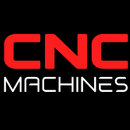Top 7 Tips for CNC Machine Shops to Increase Production in 2025

Top 7 Tips for CNC Machine Shops to Increase Production in 2025
In an era where competition is fierce and client demands keep rising, CNC machine shops must consistently optimize processes to remain profitable. By 2025, rapidly evolving technologies, shifting supply chains, and the drive for near-zero downtime will shape the future of machining. Below are seven tips that can elevate your shop’s productivity—from optimizing schedules to embracing next-generation automation.
1. Embrace Advanced Scheduling and ERP Integration
Why It Matters
Long lead times, idle spindles, or poor resource allocation can drastically reduce throughput. A robust ERP (Enterprise Resource Planning) system syncs real-time orders, machine availability, and material inventory to streamline scheduling.
Key Actions:
- Real-Time Machine Monitoring: Integrate sensors or IoT devices that update your schedule whenever a machine becomes free or a job finishes early.
- Intelligent Prioritization: Algorithms can dynamically queue urgent projects without disrupting ongoing work.
- Clear Operator Dashboards: Workers can see which parts or setups are needed next, minimizing confusion or downtime.
Result: Smooth transitions between jobs and fewer bottlenecks ensure each machine is used at optimal capacity.
2. Automate with Collaborative Robots (Cobots)
Why It Matters
Short lead times and labor shortages make robotic automation essential for tasks like part loading/unloading, deburring, or inspection. Cobots (collaborative robots) differ from traditional industrial robots in that they can operate safely alongside humans without bulky cages.
Key Actions:
- Start Small: Automate a single repetitive task to learn the ropes of robotic programming.
- Reconfigurable Work Cells: Cobots can be quickly redeployed to different CNC stations—ideal for shops handling mixed part volumes.
- Employee Upskilling: Free operators from manual duties so they can focus on higher-value tasks like programming or quality checks.
Result: Lights-out or extended-hour machining fosters higher output without significant overhead increases, bridging gaps in staffing.
3. Optimize Tooling and Feeds/Speeds
Why It Matters
Tooling inefficiencies—like running at suboptimal speeds, or using outdated end mills—degrade cycle times and wear rates. By constantly refining parameters, you can substantially cut production costs.
Key Actions:
- Advanced Tool Coatings: For high-temp alloys, invest in AlTiN or diamond-like coatings that handle elevated speeds.
- Adaptive CAM Strategies: Software can automatically adjust feed rates in real time to maintain stable chip loads, especially on complex geometries.
- Live Tool Monitoring: If your CNC monitors spindle loads and vibration, it can trigger feed adjustments or tool changes as soon as risk of tool breakage arises.
Result: Reduced scrap rates, fewer tool replacements, and higher consistency across multiple shifts.
4. Lean Manufacturing Practices and 5S
Why It Matters
Small inefficiencies—like searching for the right fixture or dealing with excess inventory—add up quickly. Lean and 5S approaches cut down wasted motion, overproduction, and wait times.
Key Actions:
- Organize Workstations: Label tool storage, use shadow boards, and keep standard fixtures within easy reach.
- Kanban Systems: Signals for restocking materials ensure minimal downtime from stockouts.
- Continuous Improvement: Encourage operators to identify recurring issues (e.g., frequently misused or missing tools) and propose solutions.
Result: By systematically removing clutter and streamlining processes, shops can see a productivity jump without major capital investment.
5. Explore High-Speed Machining and Multi-Axis Setups
Why It Matters
Demands for tighter tolerances, intricate part geometry, and shorter lead times push shops to adopt high-speed machining (HSM) or multi-axis capabilities. These advanced methods enable complex cuts in fewer setups.
Key Actions:
- Invest in 4- or 5-Axis CNC: Reduces re-fixturing and manual part flipping.
- Adaptive Clearing: High-speed toolpaths maximize material removal rates.
- Robust Fixturing: Secure workpieces to handle rapid acceleration without vibration or chatter.
Result: A single high-speed run might replace multiple conventional passes, trimming hours off production cycles and boosting output.
6. Train and Retain Skilled Machinists
Why It Matters
In 2025, high turnover and skill gaps can disrupt even the most advanced operations. A stable workforce that deeply understands CNC software, automation, and quality demands is crucial.
Key Actions:
- Cross-Training: Empower machinists with CAM programming or robotics knowledge; flexible skill sets reduce bottlenecks when workloads fluctuate.
- Upskill Incentives: Offer certifications in advanced machining processes—employees feel valued and your shop’s capabilities expand.
- Mentorship Programs: Pair senior machinists with newer hires, fostering knowledge transfer and consistent standards.
Result: Enhanced job satisfaction, lower error rates, and a bench of employees capable of adopting next-gen manufacturing technologies.
7. Monitor Production with Real-Time Analytics
Why It Matters
Data-driven decisions can significantly boost productivity. Modern machine monitoring solutions track spindle utilization, downtime reasons, and operational efficiency—allowing for quick problem resolution.
Key Actions:
- Install Machine Sensors: Log spindle rpm, temperature, feed rates, and alarm states.
- Dashboard Insights: Show operators and managers live performance metrics (OEE, part counts, run times) so they can pivot resources if a shift in priority occurs.
- Predictive Maintenance: Analyze unusual vibration or load patterns—replacing tools or bearings before catastrophic failure.
Result: By tying production data to planning, shops optimize throughput, reduce idle time, and more accurately project turnaround for client orders.
Conclusion
In 2025’s competitive manufacturing landscape, CNC machine shops that want to thrive must focus on increasing production through strategic automation, advanced machining techniques, workforce excellence, and real-time data insights. From adopting collaborative robots to refining high-speed toolpaths, each step elevates daily output and profitability. By embracing these top 7 tips, your shop can deliver consistent quality at scale while maintaining the agility to tackle new projects and emerging markets in the years ahead.


